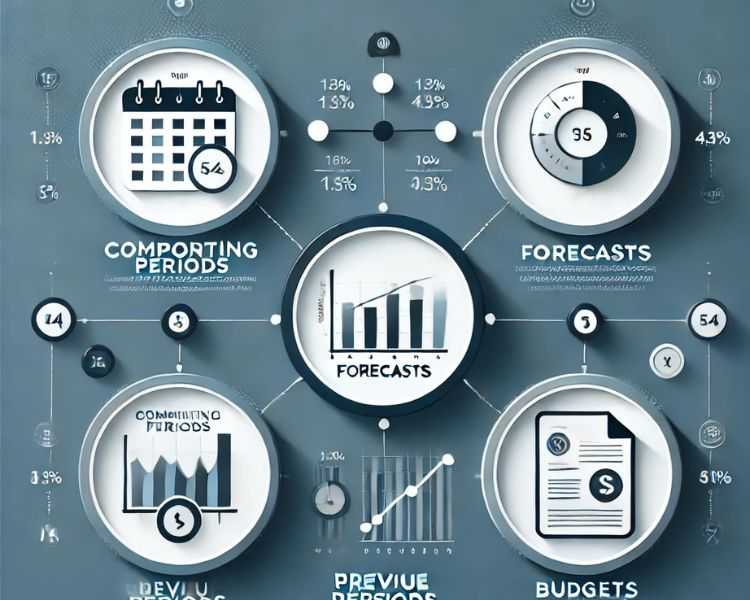In management and financial analysis, comparing data is essential for making informed decisions. Different types of comparisons help organizations evaluate performance, set goals, and make necessary adjustments. The key types of comparison include corresponding periods, forecasts, previous periods, and budgets. Each of these plays a crucial role in understanding business performance and future planning.
Comparison with Corresponding Periods
Comparing financial or operational data with corresponding periods helps businesses assess performance over similar timeframes. A corresponding period refers to the same time in a different year, such as comparing sales in March 2025 with March 2024. This approach eliminates seasonal variations and provides a clear understanding of year-over-year growth.
Example:
A retail store records $100,000 in sales in December 2024 and $90,000 in December 2023. By comparing these corresponding periods, the management determines that sales have increased by 11.1%. This insight helps businesses analyze trends and make necessary improvements.

Comparison with Forecasts
Forecasts represent predicted values based on past performance and future expectations. Comparing actual results with forecasts helps businesses measure accuracy and make strategic adjustments. If actual performance deviates significantly from the forecast, it may indicate issues that require management intervention.
Example:
A company forecasts $500,000 in revenue for Q2 2025, but the actual revenue turns out to be $450,000. The 10% shortfall prompts the management to investigate reasons such as declining customer demand or operational inefficiencies.
Comparison with Previous Periods
Comparing results with previous periods, such as the previous quarter or month, helps businesses track short-term performance changes. This method is useful for monitoring growth, efficiency, and operational trends over time.
Example:
A manufacturing company produces 5,000 units in January and 5,500 units in February. By comparing these previous periods, management sees a 10% production increase, indicating improved efficiency or higher demand.
Comparison with Budgets
A budget is a structured financial plan that details anticipated income and projected expenses. Comparing actual performance against budgets helps organizations control costs and manage resources effectively. When actual spending exceeds the budget, corrective actions may be needed to prevent financial losses.
Example:
A marketing department has a budget of $50,000 for an advertising campaign but spends $60,000. This budget comparison highlights an overspending of $10,000, prompting a review of marketing expenses to stay within financial limits.
Conclusion
Effective management requires consistent comparisons with corresponding periods, forecasts, previous periods, and budgets. These comparisons help businesses identify trends, predict future performance, manage costs, and optimize operations. By using these analytical approaches, organizations can make informed decisions and drive long-term success.